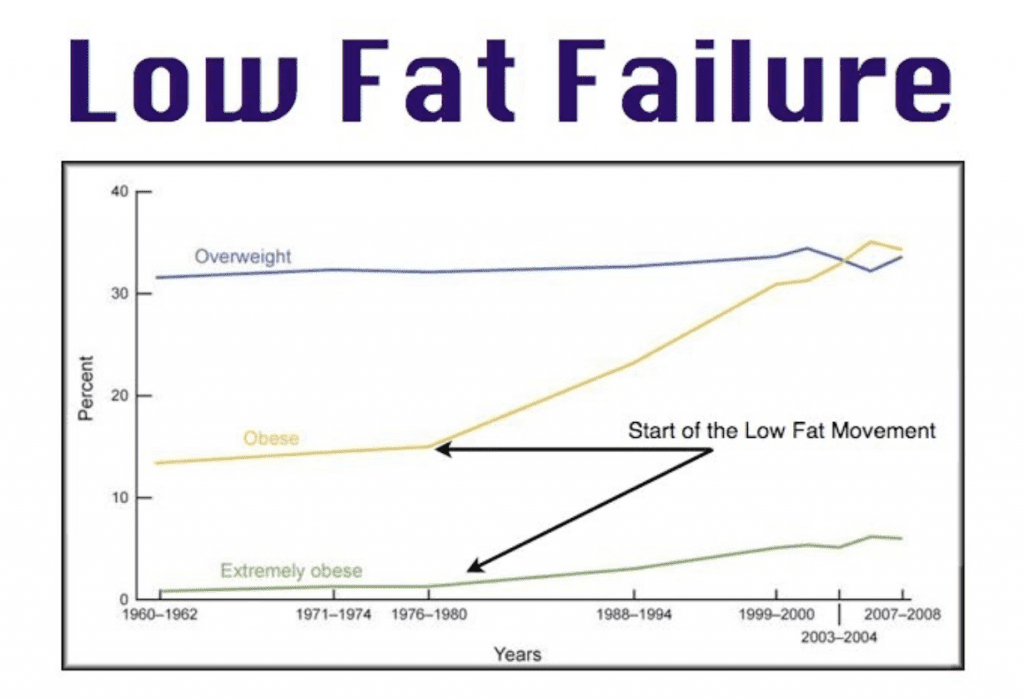You may have come across a similar opinion: “Up until a few decades ago, people were not chronically ill with diabetes or metabolic diseases, and now look at us. Science is trumped by the special interest groups.”
Overweight and obesity problems are growing rapidly in most EU and non-EU member states, with an estimated 52.7% of the EU and more than two-thirds of the adult population in the US being overweight in 2019.
In an effort to prevent obesity and related chronic diseases, most countries in the world have introduced their standards and materials providing advice on how to eat. Among the most famous are the food pyramids, the healthy plate, and more recently, the food traffic lights and the food compass.
But not everyone agrees with the guidelines
On the one hand, we have arguments about how carbohydrates and grains harm our health and cause obesity…
Is it all just conspiracy theories?

The post was shared by Joe Rogan, who has 16.2 million followers on IG alone, and subsequently spread like wildfire.
The author of the post, Good Ranchers (meat products retailer) went on to write: “This new food pyramid is being touted as the most comprehensive and science-based nutrient profiling system to date, which honestly just isn’t a surprise anymore. This is happening in a country where congress declared pizza to be a vegetable, and if tomato paste can make pizza a vegetable then maybe luck can make the charms healthy.”
The problem is that these posts are not true:
1. For example pizza has never been declared a vegetable by the US Congress.
2. The food compass system they refer to is used to compare foods in the same category, i.e. not steaks and cereals.
3. Although this system was partially subsidized by the government, it is not among the government’s recommendations due to its current shortcomings.
But we also have reliable sources
According to research by Marion Nestle, who examines the influence of the food industry on nutritional recommendations, 156 out of 168 food studies have been shown to be influenced by the food industry.
Marion thinks that one of the main problems is that we only find out about these influences on the corporation after they are revealed. For example, when a link was found between the consumption of sugary drinks and obesity, Coca-Cola used its sponsored studies to divert attention from its drink to lack of exercise.
When we look at it from the perspective of research funding, it is usually funded by the state or the private sector. Therefore, a conflict of interest is stated at the end of the study. But that doesn’t mean the study isn’t true.
The most common ways companies manipulate studies are:
- non-publication of results in case of a neutral or negative result
- designing studies to produce results supporting the health benefits of the products
So can general recommendations be trusted?
Nutritional recommendations were created in the US in 1980 and are reviewed every five years. They are evaluated by a committee made up of experts from various fields.
It is quite common for people and professionals working in the field of nutrition to have ties to the food industry. A conflict of interest does not necessarily mean that committee members were influenced by corporations when they reviewed the dietary guidelines, but any time you accept donations, funding, etc., we are biased to some degree.
Do you remember the opinion from the introduction?

Here is the content from the official recommendations:
-
Increase the consumption of complex carbohydrates and “naturally occurring” sugars from about 28 percent of intake to about 48 percent of energy intake.
-
Reduce the consumption of refined and processed sugars by about 45 percent to account for about 10 percent of total energy intake.
-
Reduce overall fat consumption from approximately 40 percent to about 30 percent of energy intake.
-
Reduce saturated fat consumption to account for about 10 percent of total energy intake; and balance that with polyunsaturated and monounsaturated fats, which should account for about 10 percent of energy intake each.
30% of energy from fat is not a low-fat diet by definition.
These recommendations have not changed fundamentally from the perspective of macronutrients. What changed were the recommendations regarding processed foods and the language used.
Marion Nestle says one way the food industry influences recommendations is through the choice of words.
Recommendations suggest eating more “vegetables and fruits” (we can clearly imagine specific foods).
Recommendations about foods to avoid use vague language – saturated fats, salt, and simple sugars (many people cannot imagine specific foods).
Studies of nutritional recommendations from different countries clearly show a health benefits.
- According to a study from Denmark, non-adherence to the Danish Dietary Guidelines is associated with up to 43% increased all-cause mortality in a dose-dependent manner.
- A survey of the British population shows that adherence to nutritional recommendations is associated with a reduction in premature mortality.
- Adherence to the Chinese or US recommendations resulted in significantly lower overall mortality in Chinese following specific recommendations for vegetables, fruits, legumes, fish, and eggs, but not for grains, dairy, meat, fat, and salt.
- Higher adherence to the 2015–2020 Dietary Guidelines for Americans was associated with lower risk of cardiovascular events, cardiovascular disease mortality, and all-cause mortality among US adults.
My view
From my point of view, the general nutritional recommendations are basically good. They recommend paying attention to fat intake, minimizing saturated fat in the diet and salt intake, paying attention to energy intake, and focusing on minimally processed foods and fiber intake.
The problem is that only approx. 20-25% of people consciously or unconsciously follow these recommendations. In addition, hoaxes spread quickly and lead to mistrust of national nutritional recommendations.
As Gil Carvalho MD PhD pointed out:
“Westerners are sick so the diet guidelines must be unhealthy”
-confused influencerby that logic the exercise experts also recommend must be causing the obesity epidemic, let’s stop advising it.
we’re all SO much better than this mindless parroting of horrific memes…
— Gil Carvalho MD PhD (@NutritionMadeS3) January 27, 2023
